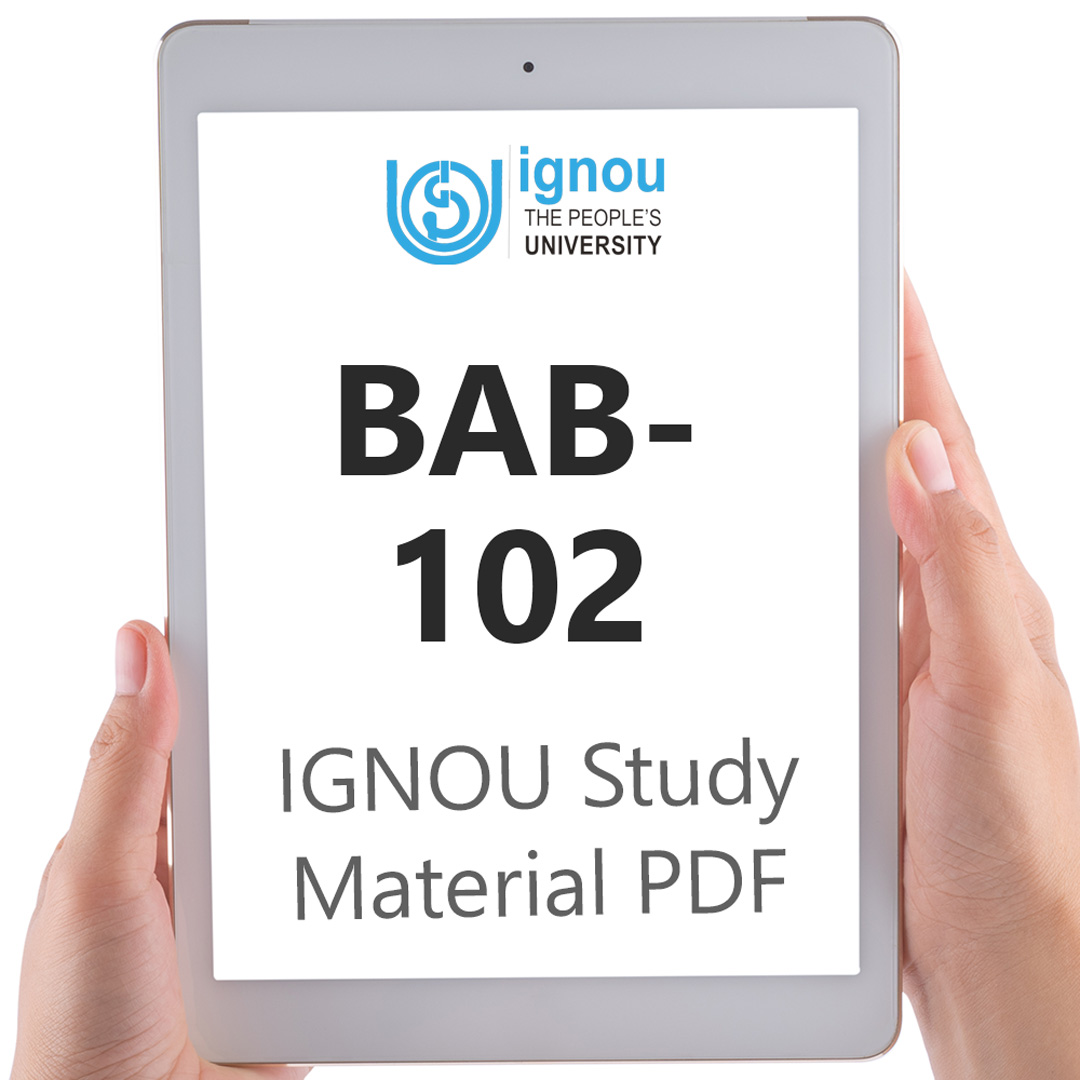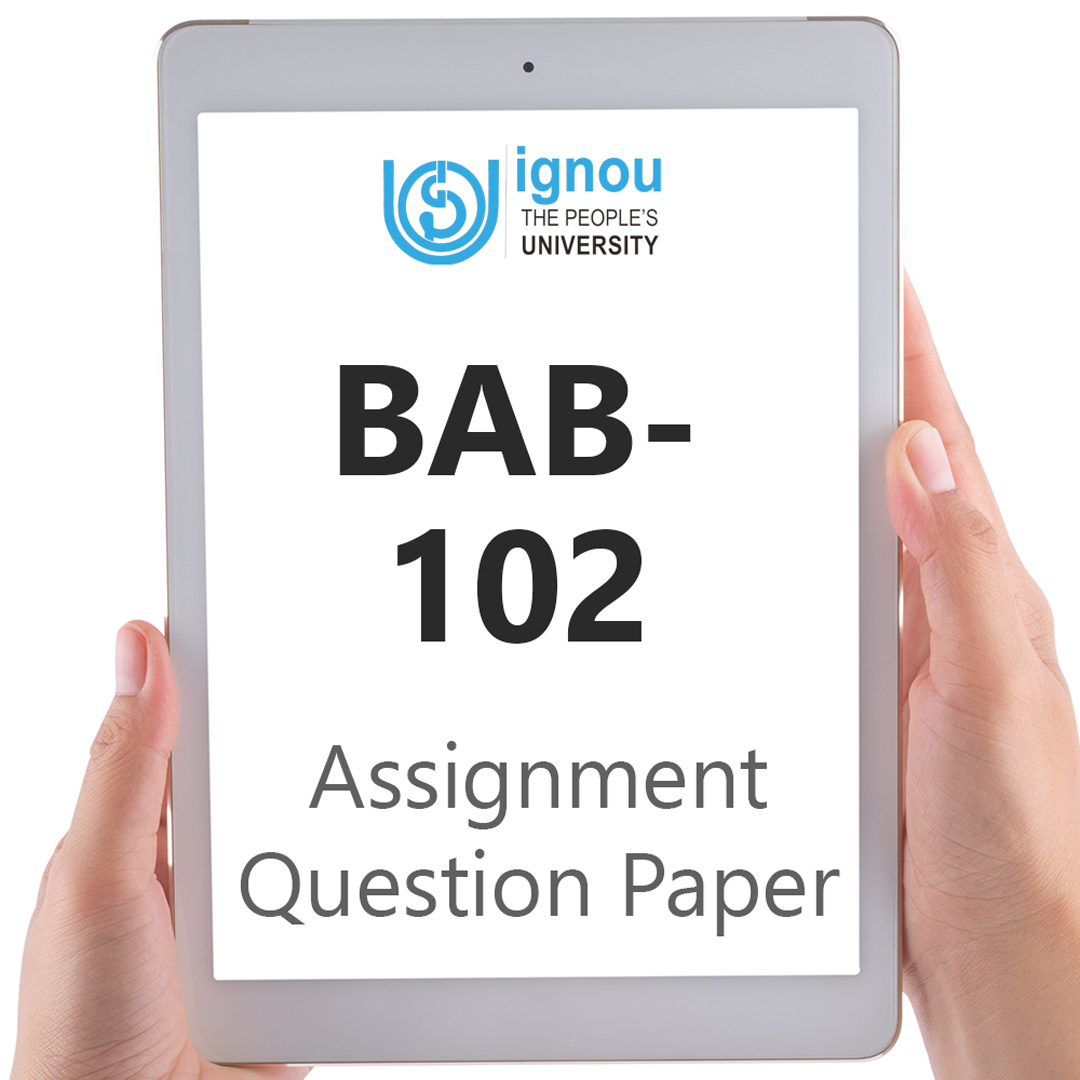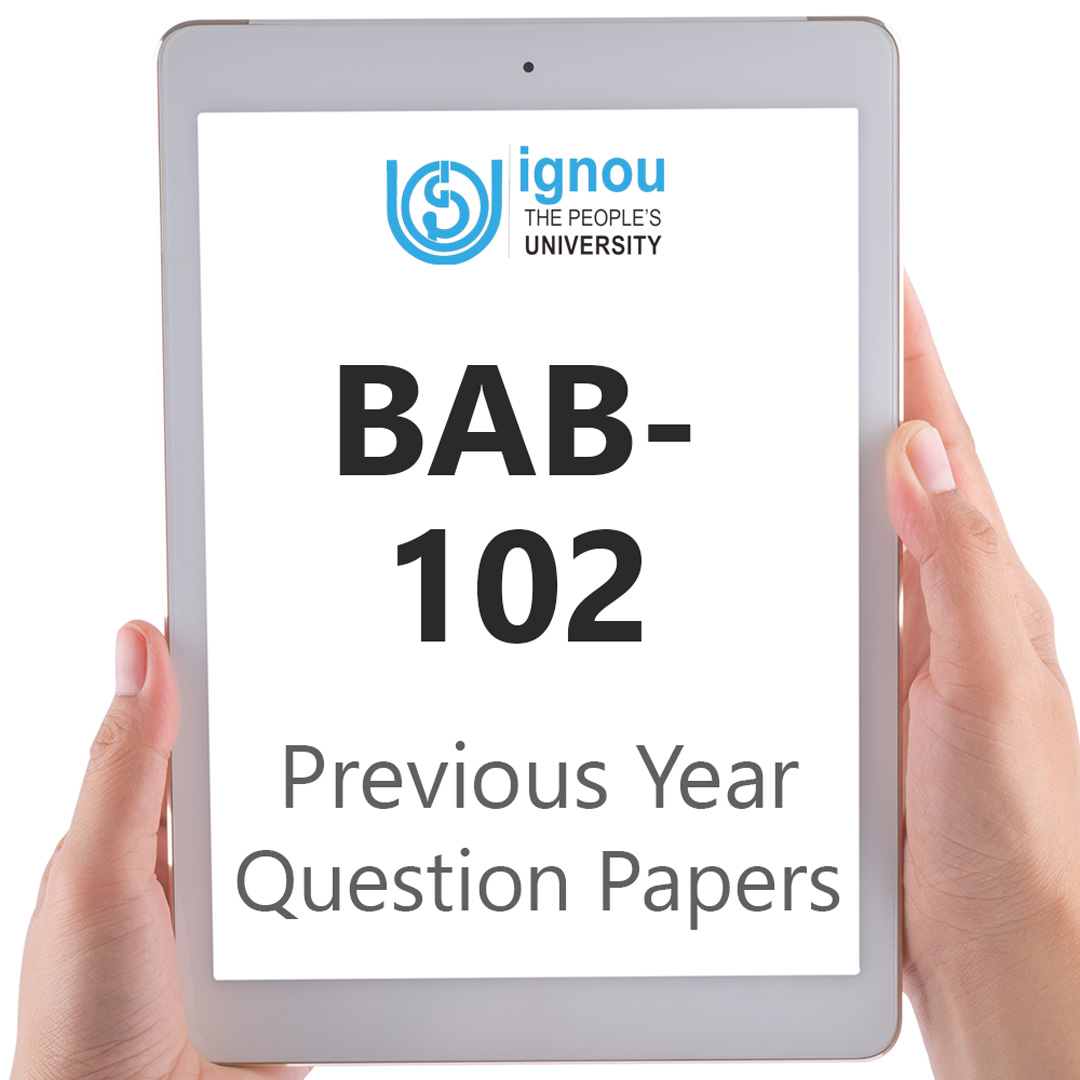If you are looking for BAB-102 IGNOU Solved Assignment solution for the subject B.R. Ambedkar: Society and Culture, you have come to the right place. BAB-102 solution on this page applies to 2022-23 session students studying in CLTA courses of IGNOU.
BAB-102 Solved Assignment Solution by Gyaniversity
Assignment Code: BAB-102/TMA/2022-23
Course Code: BAB-102
Assignment Name: B.R. Ambedkar: Society and Culture
Year: 2022-2023
Verification Status: Verified by Professor
SECTION A
Marks: 100
Weightage - 30%
Note: Attempt any Five Questions. All Questions carry equal marks (20x5).
1. Analyse Ambedkar’s view of caste.
Ans) Ambedkar gave a presentation in Dr. Goldenweizer's anthropology seminar at Columbia University. Ambedkar names caste as a significant institution in his essay, Castes in India: Their Mechanism, Genesis, and Development. He notes that caste is a complicated topic that requires a thorough explanation. He claims that many smarter minds have come before him and tried to understand the mysteries of caste, but it is still something that is "unexplained," if not "ununderstood," he says. Caste is a huge issue that has been debated on both a theoretical and practical level.
Ambedkar goes on to say that no other civilised society, besides Indian society, still practises ancient rituals today. Although time and civilization have advanced, its tribal code still functions with all of its original vigour. Its religion is essentially primitive. Exogamy was a common practise in the prehistoric era. Exogamy, however, lost its significance and effectiveness with the passage of time and the ensuing changes in institutional norms and values, and except for the nearest blood relatives, there is typically no social barrier restricting the field of marriage. However, the law against exogamy is still in effect in India.
Even though there are no clans in India, the society still adheres to the clan (gotras) system, as evidenced by the law of matrimony, which is based on the exogamy principle. It's not that sapindas (blood relatives) can't get married; rather, even unions between sagotras (members of the same clan) are viewed as sacrilegious. Ambedkar points out that endogamy is unusual among Indians. The different Indian gotras are and have always been exogamous: It is not an exaggeration to say that exogamy is a creed to the people of India, and no one dares violate it. Exogamy is strictly observed, and there are harsher penalties for violating it than endogamy, even though caste endogamy occurs among them.
You will therefore quickly realise that there cannot be a caste when exogamy is the norm because exogamy implies fusion, according to Ambedkar. However, because castes exist, the creation of castes in India ultimately entails the superposition of exogamy and endogamy. Ambedkar uses the hypothetical example of a group that wants to become a caste to examine the strategies that group will need to use to become endogamous. A formal prohibition against inter-marriage with other groups will be useless if a group wants to become endogamous because exogamy is already prevalent. Again, there is a propensity for assimilation and amalgamation among all groups in close contact with one another, which leads to the consolidation into a homogeneous society.
It is imperative to draw a line outside of which people should not enter into marriage if this tendency is to be strongly combated in the interest of caste formation. However, this restriction to forbid inter-caste unions leads to internal issues for which there is no simple fix. Generally speaking, there is equality between people of the same age in a normal group and the sex ratio is distributed more or less evenly. But in actual societies, the equality is never quite achieved. The preservation of gender equality becomes the ultimate goal for the group that wants to become a caste because, without it, endogamy is no longer possible. To put it another way, if endogamy is to be preserved, conjugal rights from within must be supported; otherwise, group members will be pushed outside the circle and forced to take care of themselves however they can. The same requires that the rights to marriage be supported internally.
2. What is an ideal society according to Ambedkar? Discuss.
Ans) The majority of Ambedkar's writings aimed to create an "ideal society," a "caste-less society," or a society based on "justice principles." All three of these types of societies share a similar connotation: they must be founded on the three ideals of liberty, equality, and fraternity. Furthermore, it is important to comprehend the significance of these three principles in order to comprehend Ambedkar's vision of a just society. But first, let's consider the circumstances that led Ambedkar to realise the need for a just society or an ideal society.
acknowledging that "human society is not one single whole anywhere. He noted the following about an ideal society: "It is always plural. The following inquiries should be made in order to define an ideal society: How numerous and diverse are the interests that the groups consciously share? How expansive and liberated is the interaction with other types of associations? Are there more forces dividing groups and classes than there are forces bringing them together? What kind of social significance does this group life have?
As a result, he imagines a society that is diverse in personality but not static, rigid, traditional, or orthodox in behaviour. It would bind all the people together into a single cultural bond and give everyone a fair and equal chance to advance. He said, "Ethically, everyone is heterogeneous. The foundation of homogeneity is the unity of culture. 15 Unification of culture is obviously only possible in a society that is founded on liberty, equality, and fraternity.
Ambedkar outlines his ideal society in his essay "Annihilation of Caste." In the context of Indian society, which is divided into castes and religious communities, he demonstrates how extremely pertinent they are. Depending on the level of participation and communication, each caste group tends to develop its own unique type of like-mindedness.
3. Discuss the various aspects which influenced Ambedkar to write on Shudras?
Ans) When Ambedkar set out to write Who Were the Shudras, the field of history writing had already begun to take shape through systematic documentation and study of Sanskrit, Pali, and other textual sources. Despite archaeology being another source, the study of ancient texts has become the primary method for understanding ancient society. Three main types of historical writing had already begun to take hold by the time Ambedkar began his historical writings:
The dominant idea in western historical writings was the superiority of the white race and the idea of a shared Indo-European heritage, or Aryan culture.
The Brahmanical school of history considered Indian society to be a single, homogeneous cultural group, who’s prime existed in the far past. It recognised India's spirituality as its essence, in contrast to the materialist western civilization. It regarded the ritualistic and textual traditions of Indian religion as sacred and divine. As a result, even the social structure was believed to have a divine origin.
The historical past was condensed to the forces of production because the Marxian mode of interpretation viewed history from the base-super structure point of view, where material conditions were seen as an acting force for change. When analysing India's past, dialectical materialism was carefully applied. The concept of class and means of production was used to discuss the evolution of Indian society, its tactical four-fold division, and its further expansion into jatis. Such a framework discountes the significance of both consciousness and the contributions made by the human mind.
When periodizing Indian history, the British used periods like the Buddhist, Hindu, and Muslim eras to categorise history according to various religions. The periodization of Indian history was a common practise among Indian historians. Numerous historical studies were limited to examining and translating texts, as well as the timeline of political dynasties.
4. Critically examine Ambedkar’s view on the origin of untouchability.
Ans) Untouchability still exists today, both among Hindus and people of other faiths. Nevertheless, Ambedkar started investigating the practise in prehistoric and ancient societies, regardless of whether they were aware of untouchability. The Primitive Man, according to Ambedkar, believed that defilement was brought on by the happening of particular events, coming into contact with particular objects, and coming into contact with particular people.
The primitive man shared this belief in the spread of evil from one individual to another. For him, the risk of such transmission was especially high when engaging in normal activities like eating and drinking. The occurrence of certain events, such as birth, initiation, puberty, marriage, cohabitation, and death, was believed to be a source of defilement.
Marriage rituals demonstrate how unclean the Primitive Man thought of marriage. In some cases, the bride was forced to engage in sexual activity with tribe members, such as in Australia, by the chief or medicine man of the tribe in America, or by the groom's friends, as in some tribes in East Africa. The bridegroom may occasionally tap her with his sword. All of these wedding customs are meant to sanitise and ready the individual for the impurity of marriage. Mothers are separated after giving birth. The child goes through a period of seclusion and separation when puberty first begins. In a marriage, the bride and groom are not brought together until the actual ceremony. A woman who is menstruating is separated.
There is a component of segregation involved when the sacred is defiled by the profane, when the kindred are defiled or when the kindred engage in non-kindred sexual activity. The profane must keep the sacred alone. The kindred must avoid the non-kindred in the same way. Thus, it is evident that in prehistoric society, the polluting agent was segregated in order to control pollution. In New Zealand, touching someone else's head became taboo because the head is a peculiarly "sacred" part of the body. He cleansed himself by rubbing his hands on fern root, which the female family patriarch later consumed. In Tonga, a man who ate taboo food could avoid bad consequences by having a chief's foot put on his stomach. The only difference between the Egyptian pollution system and the prehistoric system is that it was used on a much larger scale in Egypt.
5. Discuss the approaches adopted by Ambedkar for the emancipation of untouchables.
Ans) Ambedkar believed that education for Dalits was the most effective tool for bringing about the desired changes in society. It was not just a way for Dalits to develop their personalities or a way for them to make a living. In the modern era, it was a requirement for starting a social movement. He saw education as a tool to free Dalits from ignorance, superstition, and illiteracy. They would be able to combat all types of upper caste hegemony-caused injustice, exploitation, oppression, and social suffering.
In order to provide higher education for the Depressed Classes and to give them control over such educational institutions, Ambedkar founded Milind College in Aurangabad in 1951 and Siddharth College in Bombay in 1945. He understood the importance of planning activity to advance his movement. Regardless of their social or economic status, he believed that all men and women should have access to education. To be able to read and write, all men and women must receive at least the bare minimum of education. The majority of the population's basic educational needs are met by primary education3. The untouchables were motivated by Ambedkar's vision to comprehend their place in history and current status.
Dalits had the power and chance to combat poverty, disease, and backwardness thanks to education. Ambedkar believed that education should encourage students to think critically about their surroundings. As a result, education should have a scientific, impartial, and detached tone. Ambedkar supported granting teachers the freedom they need to create their own syllabi and evaluate the performance of their students in the context of higher education. He objected to lecturing from and adhering to a rigidly structured syllabus. He emphasised that universities must advance research and education rather than turning into organisations that hand out diplomas and administer tests.
Ambedkar established the People's Education Society on July 8, 1945, in order to promote the educational interests of the underprivileged groups. He believed that the most effective means of bringing about the desired changes in society were through education. For him, education was a tool for releasing Dalits from ignorance, superstition, and illiteracy so that they could fight against all types of oppression, exploitation, and injustice5. He thought that in order to overcome the social restrictions put in place by the Brahminical social order, untouchables needed to become politically powerful.





